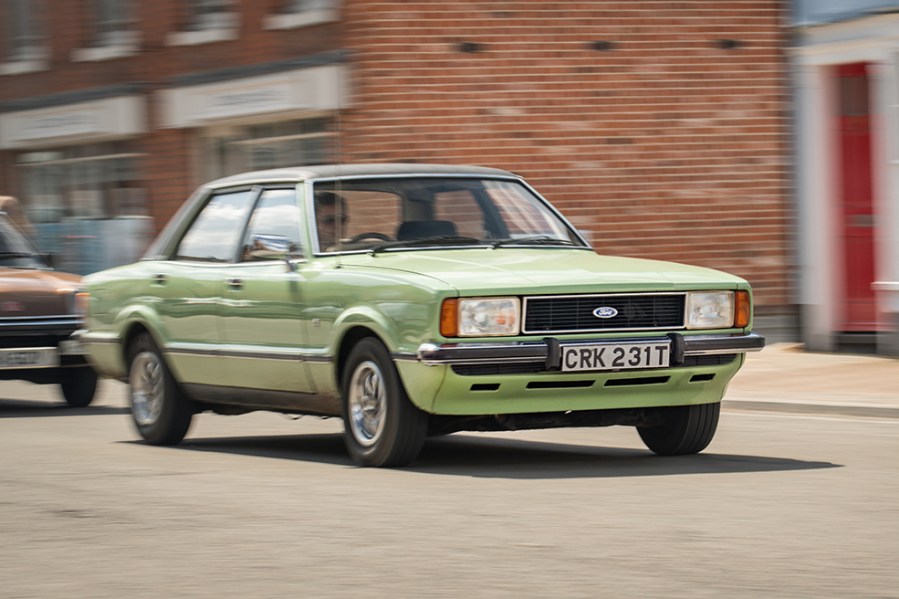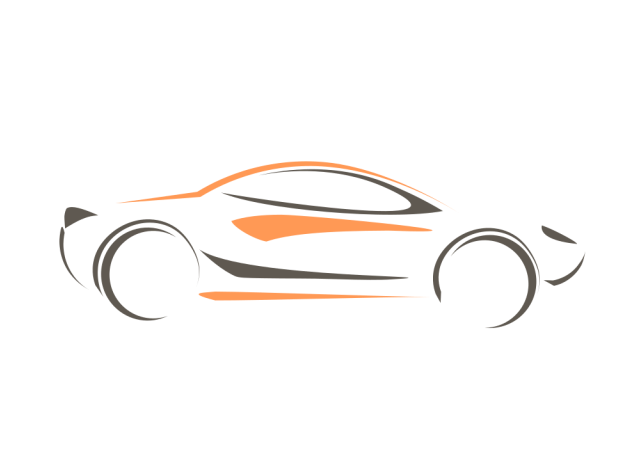Поколение TC Mark III (1970–1976)
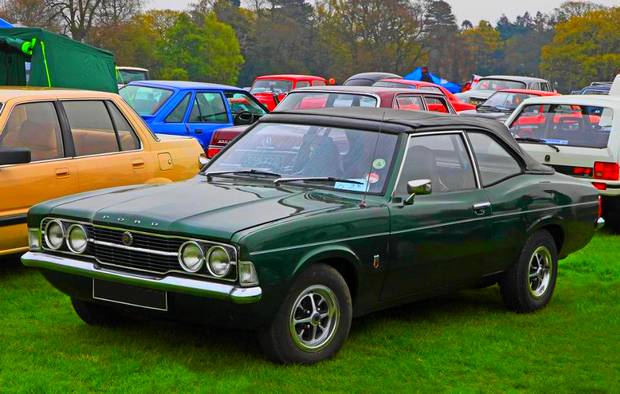 Ford Cortina GT, 1971 год
Ford Cortina GT, 1971 год
Третье поколение Форд Кортина выпускалось с 1970 по 1976 годы. Учитывая популярность модели, уже в конце 1960-х компания приступила к разработке очередного третьего поколения Cortina, Марк III.
Значительным объемам выпуска этой модели, помимо высокой популярности, способствовало слияние английского и немецкого подразделений в современный Европейский Форд, а в производственных картах появилось внутренее название TC1 от сближения технологий Taunus-Cortina.
Помимо предыдущих версий в продаже появилось двухдверное купе. Оснащался автомобиль широкой линейкой двигателей объемом от 1,3 до 4,1 литров. Комплектовалась машина трех- или четырехступенчатой «механикой» или трехступенчатой автоматической коробкой передач.
Были доступны следующие варианты отделки салона: базовая, L (для Luxury), XL (Xtra Luxury), GT (Grand Touring) и GXL (Grand Xtra Luxury).
Поначалу, модель этого поколения даже хотели назвать другим именем, но название Cortina прижилось, потому его и оставили. Несмотря на то, что визуально Mark III выглядел больше, чем Mark II, по сути это был все тот же автомобиль, только на 4 дюйма (100 мм) шире. Автомобили второго и трельего поколения имели одинаковую длину, но в последнем удлинили колесную базу (более чем на 3 дюйма или 76 мм), благодаря чему салон стал более просторным.
Передняя подвеска типа Макферсон была заменена на обычную с двойными А-рычагами, что обеспечило боее мягкий проезд неровностей и отчетливую управляемость с более тяжилими лвигателями. Весной 1971 года были внесены значительные изменения в конструкцию передней подвески и крепления амортизаторов.
Модель третьего поколения оказалась более тяжелой, по сравнению с предидущей версией, поскольку в кузове добавились дополнительные упрочняющие элементы для повышения безопасности и звукоизолирующие материалы, для дополнительной изоляции ходовой части и выхлопной системы от салона автомобиля.
Старт продаж Кортины 23 октября 1970 года оказался не сильно удачным, из-за производственных трудностей, связанных с предшествовавшей забастовкой рабочих. Но уже к 1972 году Ford Cortina стал самым продаваемым автомобилем в Великобритании и оставался таковым аж до 1976 года, когда пальму популярности перешла к модели Mk2 Escort.
В Канаде модель третьего поколения продавалась до 1973 года. В Южной Африке продавалась пикап версия этого автомобиля и была доступна версия с локально встроенным двухлитровым двигателем V4, который больше нигде в мире не использовался в этой модели.
Подразделение Ford в Австралии изготавливали свои собственные версии, используя четырехцилиндровые двигатели (1.6 и 2.0) местного производства, и базовые шестицилиндровые двигатели (3.3 и 4,1) с общей производственной линии.
Подразделение Форд в Тайване начало местную сборку Cortina в марте 1973 года. Для Японии, изготавливались специальные, суженные на несколько миллиметров кузова, чтобы вписаться в месное налоговое законодательство, ограничивающее внешние размеры автомобилей на своих улицах.
Ford Cortina Mk IV 1976-9
The Cortina Mk IV was launched in November 1976.
Gone was American styling. The look was more European. It was almost identical to the Taunus. The new body was squarer. The headlamps were rectangular.
It was less glamourous looking than the Mk III but fitted the mood of the later 1970s.
The new model line-up was:
- Cortina (1300, 1600 or 2000cc) (2dr, 4dr, estate)
- Cortina L (1300, 1600 or 2000cc) (2dr, 4dr, estate)
- Cortina GL (1300, 1600 or 2000cc) (2dr, 4dr, estate)
- Cortina S (1600 or 2000cc) (2dr or 4dr saloon)
- Cortina Ghia (1600 or 2000cc) (4dr saloon or estate)
The Cortina, Cortina L and Cortina GL were available with two or four-door saloon bodies or four-door estate bodies.
Luxury was provided by the Ghia model. The trim was designed by the Italian Ghia studio. Like the outgoing 2000E, it featured a black vinyl roof.
Ford Cortina Mk V, c1979
GTs were out. The new sporty model was the Cortina S. The Cortina S had a black-themed interior, which also included a real wood dash. The seats had a contrasting
stripe in true 1970s deck chair tradition.
In 1977 Ford introduced a new 2.3-litre V6 engine to the Cortina range. It was available on the GL and upwards.
Поколение Mark V (1979–1985)
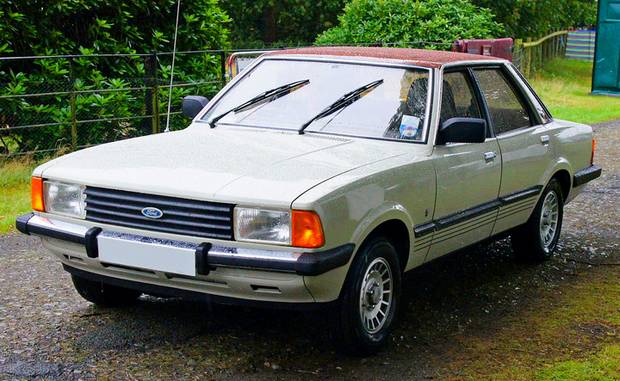 Ford Cortina 2.0 Ghia, 1980 год
Ford Cortina 2.0 Ghia, 1980 год
Автомобиль Ford Cortina пятого поколения выпускался с 1979 по 1982 годы. Модель оснащалась двигателями 1.3. 1.6 и 2.0 в сочетании с четырехступенчатой «механикой» или трехступенчатым «автоматом». Машина предлагалась в версиях двух- или четырехдверный седан, пятидверный универсал и пикап. На смену этой модели пришел Ford Sierra.
В Австралии Cortina V поколения выпускалась до апреля 1980 года, где она была известна как TF Cortina.
Во многом обновления в пятом поклоении носили косметический характер. Изменениям подверглись передние фары, к которым добавились большие изогнутые указатели поворотов, сигналы которых стали видны со стороны автомобиля.
Была увеличена передняя решетка радиатора, увеличена площадь стекла и измена форма крыши, что позволило увеличить аэродинамические свойства автомобиля. Так же изменениям подверглись задние фонари и элементы отделки.
Рестайлинговые изменения делались в первую очередь для приведения внешности Cortina в соответсвие с дизайном набирающих популярности автомобилей Fiesta MkI, Капри MkIII и предстоящего Escort MkIII.
Все это позволило модели пятого поколения Ford Cortina в течении следующих пяти лет оставаться самым продаваемым автомобилем в Великобритании, аж до того времени, когда на смену ему пришел Ford Escort в 1982 году.
Вплоть до 1981, Кортина был первым продаваемым автомобилем в Великобритании. В последний, 1982 год, своего выпуска, Кортина был вторым продаваемым автомобилем в Великобритании и самым популярным большим семейным автомобилем.
Ask Honest John
I would like to buy an affordable older carburettor equipped car — what do you suggest?
«I would like to buy an affordable older carburettor equipped car that isn’t a Morris Minor (I’ve done them to death). It doesn’t have to have vivid performance but like the Minor must have reasonable spare parts availability and reasonable economy. What do you suggest?»
There are plenty of choices, but if your main concern is parts supply then (assuming you’re UK based) it’s probably easiest to go with a British classic such as a Mini, MGB and most things with a Triumph badge on. Which car is best for you will depend on what your total budget is and how you plan to use it — if you’re moving people or things about, then a Ford Cortina might suit you, alternatively, if it’s just you then an MG BGT is a good everyday driver.
Answered by Keith Moody
Suspension, steering and brakes
Ah yes, void bushes. Fitted to the rear trailing arms and diff housing, they are legendary for premature wear — steadily declining handling is a giveaway; being able to easily rock the back of the car from side to side indicates they’re really shot. Poly bushes are the obvious solution, but they make the ride so hard that many owners live with regularly replacing the OE-spec rubber void bushes. Tie-rod bushes are also prone to failure, the tell-tale being a clunking under braking. Most parts are still available new – a situation helped by good old Ford interchangeability – but power-assisted steering racks and the shorter-type steering shafts that fit between the column and the rack are hard to find, new or used.
The front disc and rear drum set-up works well when it’s in good order, and all models came with a servo. An overhaul isn’t the end of the world — new discs, drums, rear wheel cylinders, callipers and calliper rebuild kits are all available and inexpensive. New master cylinders can be harder to source but they can be refurbished with a home DIY kit for circa £15 but be careful to get the right parts as there are a couple of different types.
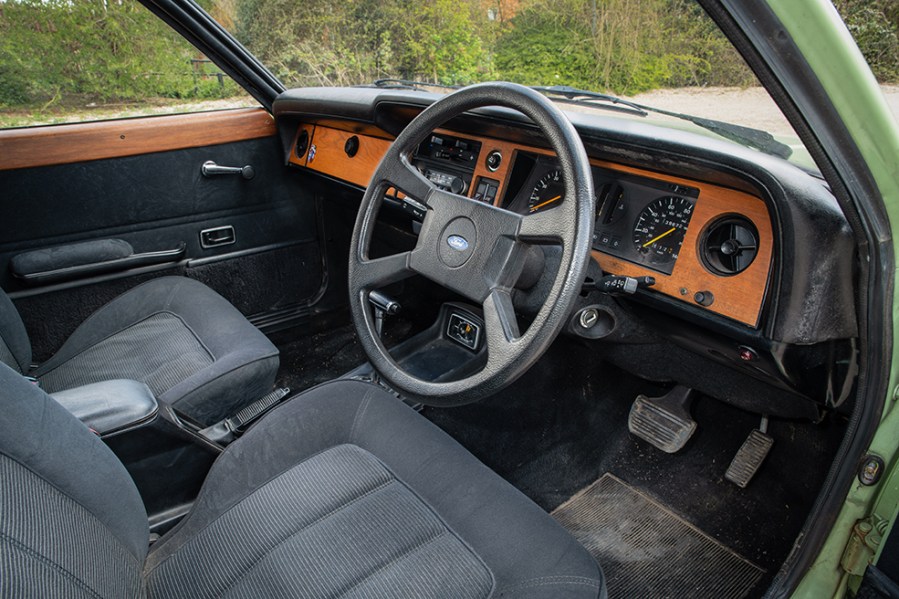
Ford Cortina Mk III 1970-6
Ford Custom 500 Four-Door Sedan, 1969. The style of the Ford Cortina Mk III
owed much to contemporary American styling.Image courtesy of The Ford Heritage Vault.
The Cortina Mk III was launched in October 1970. In style it owed much to America. The coke-bottle styling was very similar to American Fords from a couple of years earlier. A look
at stylists’ early clay models suggest that the coke-bottle lines were a last-minute revision.
The new Cortina’s complex range of options
and engine sizes was also American. Ford offered engines sizes from 1300cc up to 2000cc with all levels of trim from the basic Cortina up to the luxury GXL. There was also a sporty GT derivative.
The model line-up was:
- Cortina (1300, 1600 or 2000cc) (2dr, 4dr, estate)
- Cortina L (1300, 1600 or 2000cc) (2dr, 4dr, estate)
- Cortina XL (1300, 1600 or 2000cc) (2dr, 4dr, estate)
- Cortina GXL (1600 or 2000cc)
- Cortina GT (1600 or 2000cc)
The Cortina, Cortina L and Cortina XL were available with two or four-door saloon bodies or four-door estate bodies.
The GT and GXL both had a more powerful 1600cc engine as an option. Both the XL and the GXL had simulated wood trim. The luxury GXL featured that 1970s’ classic, a black vinyl roof.
The European-made Ford Taunus was similar, but not
identical to the Cortina Mk III. Image by Charles licensed under
Attribution 2.0 Generic (CC BY 2.0) (cropped).
The GT had a sportier look to the interior, as well as improved instrumentation. Both 1600cc and 2000cc models boasted a 100mph top speed.
Ford had judged the market perfectly with the Cortina Mk I and II, as well as the Escort and Capri. The company lost its way a little with the new Cortina Mk III.
The new Cortina got off to a bad start. Soon after the launch, Ford workers went on strike. There was pent-up demand for new models not yet in the dealerships.
When they did arrive, there were more problems.
The new cars suffered from quality issues, such as badly fitting doors and boot lids. Owners of new Cortinas found
the boot full of water. They had to force doors shut.
Assembly workers found it difficult to fit the complex trim and body style. Holes to fix trim were often missed. That meant drilling them after painting the cars, which left
exposed metal and quickly led to rust.
To make matters worse the new Cortina was all metric. The idea was to make servicing and assembly across
Europe possible. The German-made Ford Taunus was similar, but not identical in style. It shared many design features and parts. UK workers were more used to Imperial measurements.
Quality was not the only problem. Customers did not like the American styling. Many preferred the simpler look of the old Mk II.
Ford resolved the issues and still came out well ahead of rivals British Leyland and Vauxhall. British Leyland had their own issues with quality and striking workers.
In 1973 Ford replaced the GXL with the more luxurious 2000E. They also sold the 2000E as an estate.
Ford Cortina 2000E, c1975. This was the final look of the Mk III
The Mk III got a facelift in October 1975. Some models got rectangular headlamps, all models got cloth trim, servo brakes, heated rear windows and hazard warning lights.
In 1976 the Mk III was upgraded to the Mk IV.
Ford Cortina Mk V 1979-82
The final incarnation of the Cortina was the Mk V. Although similar looking to the Mk IV, it was more than a cosmetic make-over. The new car had a new grille,
larger windows and larger rear lamp clusters. Ford changed most of the body panels in the process.
All models had laminated windscreens as standard. There were new seats and new head-restraints; engines were improved with new carburettors for greater fuel economy.
The ‘S’ model was dropped, but customers could choose an ‘S’ handling package as an option on the more upmarket models.
The Mk V continued until 1982, before the all-new Ford Sierra with its wind-tunnel tested bodywork took over.
Bodywork
As is the case with so many classics from the 1970s, common rust spots include the rear chassis rails, inner rear crossmember, backs of the sills, rear valance, lower rear quarters, rear aches, spare wheel well and the boot floor where the bumper mounts are, as well as the Estate’s tailgate. Basically, it pays to undertake a very thorough inspection – and expect to find plenty of areas that need attention on all but the most pristine, freshly restored examples.
The area where the car’s A-pillars and kick panels adjoin, the windscreen surrounds and scuttle, front jacking points and front valance can also suffer. Under the bonnet, check the battery tray, the inner wing/bonnet hinge area and where the slam panel meets the wings, together with the top suspension mountings for signs of previous repairs and the condition of the crossmember beneath the front end. Sunroof-equipped cars are prone to rust where the edges of the roof butt up to the seal, while the factory steel sunroof panel itself is very hard to find, too.
Otherwise, availability of new old stock and replacement panels is fairly good, helped by a lot of the metalwork under the skin being shared by the Mk3. Magnum Panels sells several items new, including the front and rear valances, inner and outer sills, the battery tray, rear arches and wing mounting rails, while Ex-Pressed Steel Panels can provide scuttle corners, the boot floor and various floorpan fittings. Pattern Mk4 and Mk5 wings are the right side of £200 apiece but expect to pay more for genuine NOS panels if you can track them down.
In terms of exterior trim, early Mk4 bumper rubber inserts are hard to find, as are Mk5 screen rubbers and side trims. Rubber bumper overriders can also be problem, as the bonded-in mounts rust and split the rubber when undone. These are different front to rear, and new ones vary wildly in price.
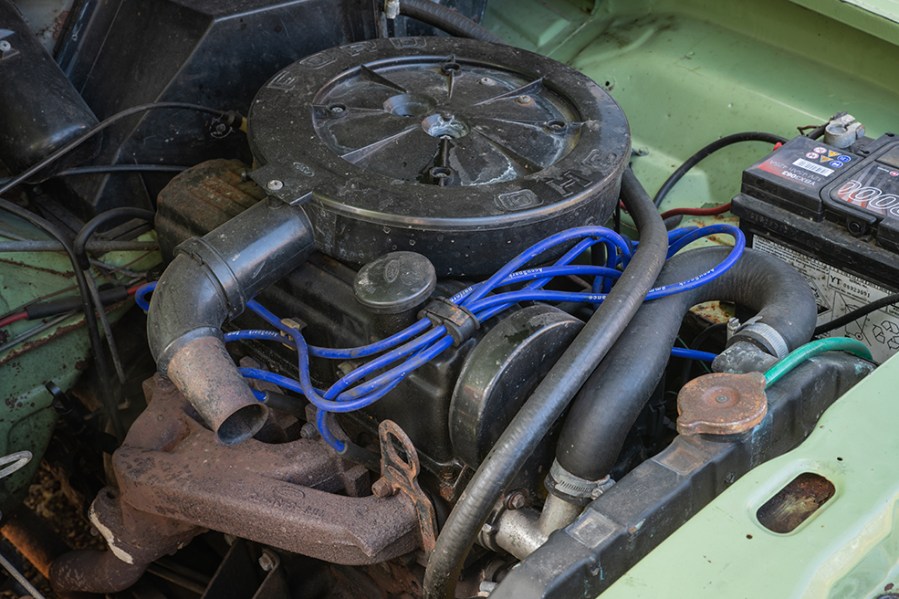
Cortinas on film and TV
We have already mentioned Michael Caine’s Cortina in Get Carter (1971).
On the small screen Cortinas were popular in police and detective dramas. Patrick Mower, as Detective Superintendent Steve Hackett, drove a 1972 Ford Cortina 1600L in Target. He soon
traded it in for a 1976 Cortina 1.6GL.
Although Jack Regan’s (John Thaw) transport in the Sweeney was usually a Ford Consul GT, a Cortina Mk III was a regular in the series. It was a blue 1974 2000XL.
Away from police dramas, Sid James drove a 1972 yellow Cortina Mk III estate in the ‘Bless this House’ (1973). In this role it was a typical salesman’s car.
Ford Cortina Mk4 & Mk5: our verdict
Once everywhere, these later Cortinas are now exceptionally rare when compared to their predecessors. The Mk5 is easier to find than the Mk4, but if anything tends to be slightly more expensive. Though no longer cheap, Cortina values not have not followed the steer upward trajectory of other contemporary rear-wheel-drive Fords like the Capri or Escort.
The rare Crayford convertibles were scarce to start with, so don’t seem to sell for high prices you may expect, perhaps as they don’t tug the ‘everyman’ nostalgia strings quite like the saloon. It probably pays to buy on condition rather than model, as engine upgrades are easy with Fords of this era.
Ford Cortina Mk2 (1966 – 1970) At A Glance
The new Cortina is more Cortina
Not as sought after as the more iconic Mk1
After getting off to such a flying start, it’s no surprise that Ford stuck to its winning formula with the second generation Cortina. Although the first car was immaculately engineered and costed, its high-fashion styling dated rather quickly. And as a result, that led it having a short shelf life – something that the company had planned for when putting together Project Archbishop. Once again, the new car’s styling took its cues from the USA, with its design chief Roy Haynes clearly being inspired by the neat minimalism that was sweeping through the Ford empire at the time. So, a mere four years after the Cortina Mk1 rolled out of Dagenham, the Mk2 version followed suit.
But it was a look that worked, and more importantly, this car proved Ford’s undoubted commitment to giving customers exactly what they wanted. And in an expanding market, what they wanted was more space, more performance and more equipment. So, with the advertising strapline, ‘New Cortina is more Cortina’, did exactly what the advertising copywriters asked of it. The new car was wider with a more capacious interior, and had a larger boot (even though engineers on the Mk1 felt that the original’s was already on the generous side of capacious). Driver comfort and ease of use were also factored in, with the increasingly luxurious interior complemented the softer ride and more ‘grown up’ feel of the new car.
It was the same story with the power units – the 1.2-litre engine may have been the entry level for the original car, but for the UK market, that was upped to 1.3-litres. The smaller 1.2-litre engine was offered in export markets, but for the UK market, this was not offered, as the higher engine capacity equated to a higher price in a buoyant market, where confidence was riding at an all-time high. The larger entry level model didn’t initially lead to an increase in size of the range-topper (which stayed at 1.5-litres), but it was only a matter of time, as Ford engineers were beavering away at a 1.6-litre crossflow version of its Kent four-cylinder.
As before, the Cortina was offered in two- and four-door saloon form, as well as a capacious five-door estate, and it was the latter that proved to be a massive hit for the company, following the slow start of its wood-clad predecessor.
The new crossflow heads were introduced in 1967, and saw a corresponding expansion of the range. The most iconic of them all was the 1600E, which now topped an expanding range that comprised of base, Deluxe, Super, GT and 1600E. It was the Cortina 1600E that truly captured the public’s imagination, when it was unveiled at the 1967 Paris Motor Show. The exterior was treated to a number of well judged modifications, such as Rostyle wheels, a black rear panel and vinyl roof – but it went as well as it looked, thanks to being powered by the 1600GT’s uprated Kent engine and uprated suspension. Inside, the 1600E was rather special, too, featuring a burr walnut woodgrain-trimmed dashboard and door cappings, bucket seats, that all-important sports steering wheel, and full six-pack instrumentation.
I would like to buy an affordable older carburettor equipped car — what do you suggest?
«I would like to buy an affordable older carburettor equipped car that isn’t a Morris Minor (I’ve done them to death). It doesn’t have to have vivid performance but like the Minor must have reasonable spare parts availability and reasonable economy. What do you suggest?»
There are plenty of choices, but if your main concern is parts supply then (assuming you’re UK based) it’s probably easiest to go with a British classic such as a Mini, MGB and most things with a Triumph badge on. Which car is best for you will depend on what your total budget is and how you plan to use it — if you’re moving people or things about, then a Ford Cortina might suit you, alternatively, if it’s just you then an MG BGT is a good everyday driver.
Answered by Keith Moody
More Questions
Interior and electrics
Sourcing plastic mouldings and fabrics for old Fords is tough at the best of times, but its particularly difficult with the late Cortinas. Parts are just too costly to tool up for reproduction manufacture, so repairs are likely to be on a bespoke basis rather than off the shelf. Otherwise, it’s a case of hunting for second-hand parts. The velour on higher-spec models survives better than the thinner cloth on basic cars – the latter being easily torn and prone to sun damage across the top of the rear seat. Replacing black and brown cloth is possible, but other colours are more difficult to find, especially the stripy trim fitted to the Mk4 S. Fortunately, the plastic trim and door cards last well, but look for unsightly speaker holes and damage to the Ghia’s wooden door-cappings.
Dodgy electrics are usually down to corrosion in the fuse box, and the headlight fuse also has a habit of overheating. Second-hand lights are still cheap enough, and things like indicator lenses can be bought new from specialist like Burton Power. The auxiliary Carello driving lights of the S pack are more difficult to source.
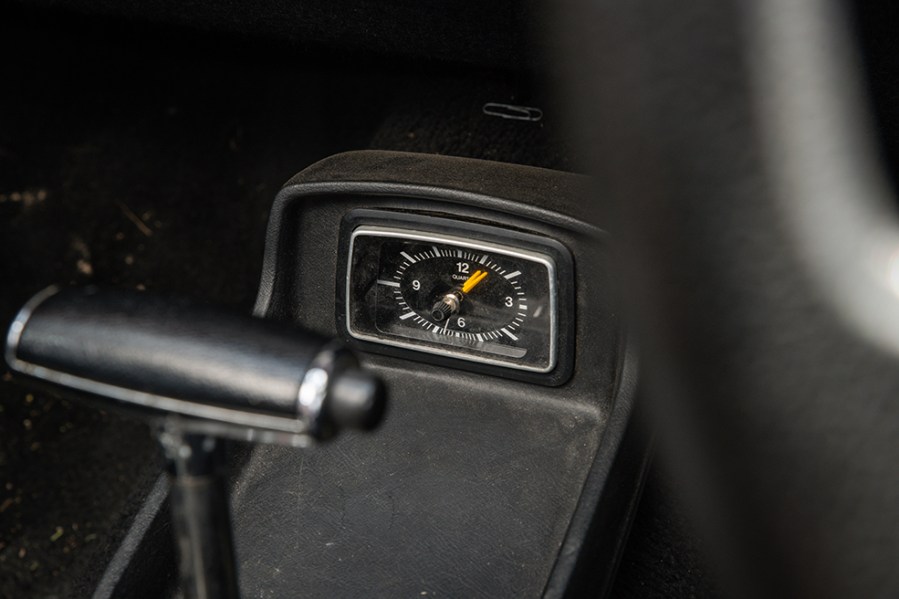
Engine and transmission
All the engines are reliable if they’re looked after, but the Crossflow 1.3 is particularly prone to premature piston and bore wear, so check for blue smoke as an indicator. The 1.6 and 2.0-litre Pintos are more rugged but do suffer from camshaft oil starvation when the oil spray bar becomes blocked, a tapping sound being the giveaway.
Water pumps on Pintos can seize if the wrong mix of anti-freeze has been used, while the VV carburettor can also be hard work to get idling right, with diaphragms and worn spindles causing issues. The Pinto uses a cam belt which should be changed every 30,000 miles although the 2.0 is a ‘safe’ engine should it snap. The flagship 2.3-litre V6 is unstressed but watch for valvetrain noise and overheating, the Cologne tending to crack its heads if it runs too hot.
Most mechanical parts are easily sourced, but single choke carbs for the Mk4 are getting difficult, and good V6 Pierburg carbs likewise. V6 radiators are also hard to find, especially for the Mk4, but a TX1 Taxi item is a good compromise for Mk5. The exhaust for the V6 is easier to source from the Continent, but the down pipes have to be UK-spec for RHD cars.
Originally, you either got a four-speed manual or an optional three-speed Borg-Warner automatic, with the smaller-engined manual cars getting a Type 3 gearbox and the bigger capacity models the stronger Type E version. The manuals are generally reliable, but a tired synchromesh, imprecise gear change and rumbling bearings will indicate if its days are numbered.
The automatic should take up drive smartly and the fluid should look clean – black fluid and a smell of burning indicates trouble. Noises from the rear end are sometimes confused with worn wheel bearings but again, the axles and diffs are generally rugged. Check the diff cover for any corrosion that might be causing leaks and letting the diff run dry.
